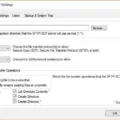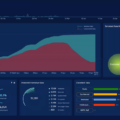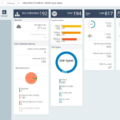When it comes to security information and event management (SIEM) solutions, two of the most popular options on the market are ArcSight and Splunk. Both products offer powerful insights into a company’s data in order to help identify potential threats and boost productivity. But while they share some similarities, they have some distinct differences that should be considered when selecting the right solution for your needs.
ArcSight is a comprehensive security management solution designed to track and analyze data insights in order to help organizations comply with policy guidelines. It provides an integrated portfolio of products, enabling it to quickly detect, investigate and respond to security incidents, as well as help organizations manage compliance. The ArcSight platform can be installed on-premises as an appliance or software, or in the cloud, supporting both centralized and distributed installations.
Splunk ES is a powerful SIEM solution that can be installed locally or as a SaaS solution via Splunk Cloud, deployed in either a public or private cloud environment or as a hybrid configuration. It provides analytics-driven insights into your data which can help you quickly identify potential threats and increase visibility across your IT environment. The user interface is easy to navigate and understand making it simple for users of all levels to gain actionable intelligence from their data.
When comparing ArcSight vs Splunk, there are several key areas where they differ:
• Cost: Splunk tends to be more cost-effective than ArcSight due to its flexible pricing options based on usage rather than upfront investment costs.
• Deployment: ArcSight is typically deployed on-premises while Splunk offers both on-premise and cloud deployment options so you can choose the best fit for your organization’s needs.
• Integration: Splunk has better integration capabilities than ArcSight due to its open API architecture which makes it easier to integrate with other systems such as threat intelligence platforms or incident response tools.
• User Interface: Splunk offers an intuitive user interface that makes it easier for users of all levels to gain actionable intelligence from their data while ArcSight has a more complex user interface which may require additional training before users feel comfortable using it.
Ultimately, the choice between ArcSight vs Splunk depends on the specific needs of your organization and the budget constraints you may have when selecting a SIEM solution. While both products offer powerful insights into your data in order to help identify potential threats and boost productivity, understanding how they differ will help you make an informed decision about which one is best suited for your needs.

Comparing ArcSight and Splunk
ArcSight and Splunk are both security information and event management (SIEM) solutions that help organizations collect and analyze data from various sources, including networks, systems, applications, databases, and more. ArcSight provides a centralized platform for collecting and correlating data from multiple sources in order to detect threats and diagnose problems. In addition to detection capabilities, it also helps organizations maintain compliance with industry regulations. Splunk ES is a distributed system for collecting, analyzing, and managing machine-generated data from any source. It provides real-time visibility into the health of IT infrastructures by tracking events across networks, applications, systems, databases, web services, and more. It can be used to identify anomalies in data patterns as well as threats such as malware or malicious activity.
In terms of differences between ArcSight and Splunk ES, ArcSight offers a centralized platform while Splunk ES is a distributed system. ArcSight focuses on threat detection while Splunk ES focuses on log management. Additionally, ArcSight provides compliance capabilities while Splunk ES does not. Finally, ArcSight can be implemented on-premises as an appliance or as software, or in the cloud while Splunk ES can be installed locally or as a SaaS solution via Splunk Cloud in public or private clouds or as a hybrid configuration.
Uses of ArcSight
ArcSight is a security management platform designed to help companies protect their data, assets, and infrastructure. It provides visibility into the activity and behavior of users, devices, applications, and networks. ArcSight helps organizations identify threats quickly and respond to them accordingly. This can be done through real-time monitoring, advanced analytics, and automated alerting. ArcSight also has compliance capabilities that allow organizations to ensure they are adhering to industry regulations. Additionally, ArcSight can be used for incident response management, audit and forensics analysis, vulnerability assessment, and patch management. Ultimately, ArcSight helps organizations protect their data from external threats while maintaining compliance with regulations set by governing bodies.
Is Splunk the Best Security Information and Event Management Solution?
The answer to this question really depends on the individual needs of a company. Splunk is one of the leading SIEM solutions available, and its integration with almost any network and security device makes it an excellent choice for organizations with complex requirements. It offers powerful analytics capabilities, a user-friendly interface, and a wide range of additional features such as threat intelligence, compliance monitoring, and data visualization. In addition, Splunk has a large user community that can provide invaluable support when setting up or using the platform. All these features make Splunk an excellent choice for any organization looking for a comprehensive SIEM solution.
Components of ArcSight
ArcSight User Analytics is a powerful analytics platform that enables users to quickly detect, investigate, and respond to malicious activity. It provides real-time analysis of network traffic and user behaviors, as well as advanced analytics capabilities such as machine learning and predictive analytics.
ArcSight DMA (Data Modeling and Analysis) is a comprehensive, integrated set of tools that provides the ability to model data from multiple data sources into an organized structure. This helps organizations identify patterns and trends in the data that can be used for proactive security measures.
ArcSight App Analytics is a cloud-based application monitoring solution that helps organizations gain visibility into their applications in order to improve performance, reduce risk, and optimize cost. With App Analytics, organizations can monitor application availability and performance, track usage trends, detect anomalies in user behavior, and identify potential security threats.
Does Amazon Utilize Splunk?
Yes, Amazon uses Splunk to power its cloud-based, analytics-driven security information and event management (SIEM) solution. This solution helps Amazon detect and respond to potential threats in real-time, making it a powerful tool for protecting their customers’ data and IT infrastructure. Splunk’s SIEM capabilities also provide valuable insights into user behavior, system performance, and other security-related metrics that help Amazon maintain a secure environment. Additionally, AWS and Splunk have partnered to provide customers with a comprehensive cloud-based security solution that combines the scalability of AWS with the advanced analytics of Splunk.
Conclusion
In conclusion, ArcSight and Splunk are both powerful solutions for security information and event management. ArcSight offers a comprehensive portfolio of products that can track, analyze, and enforce compliance policies across multiple systems. Splunk is a great SIEM solution that integrates easily with almost any network or security device. Both solutions offer an intuitive user interface and provide detailed insights into the data being monitored. Ultimately, it will depend on an organization’s specific needs as to which solution would be best suited for their environment.








